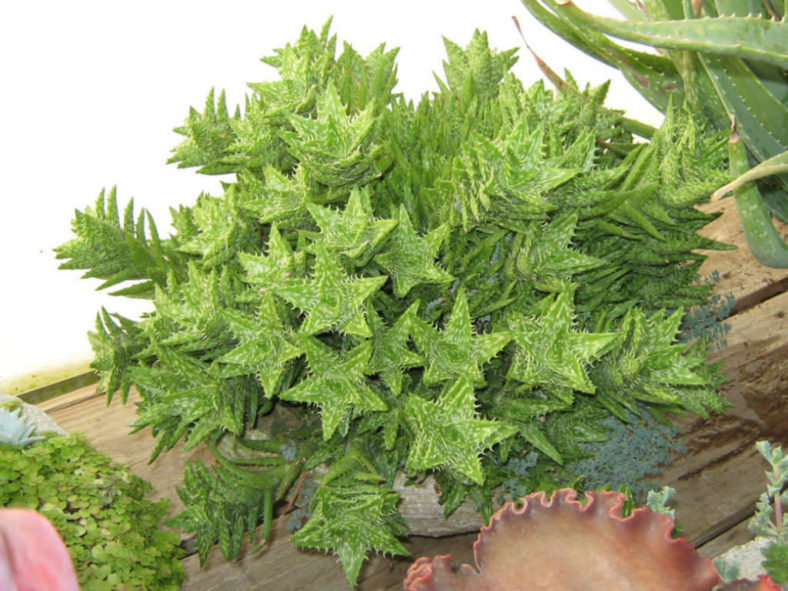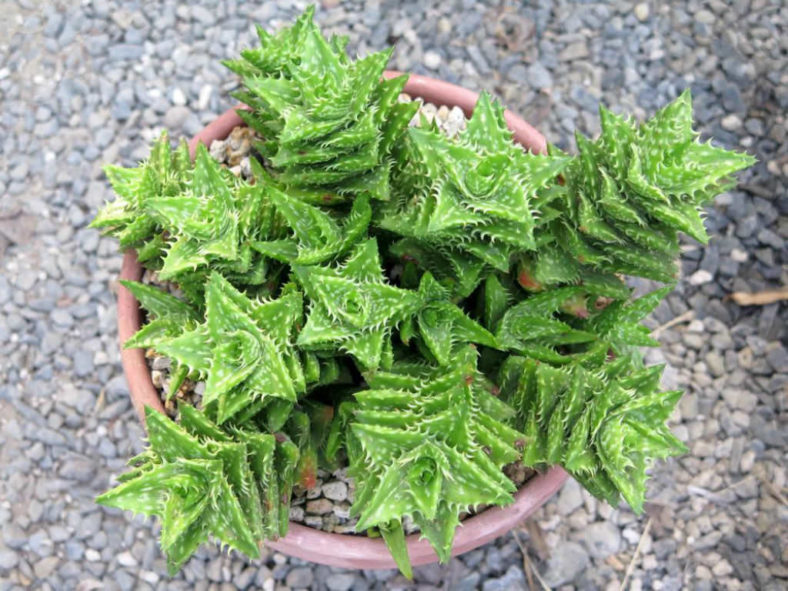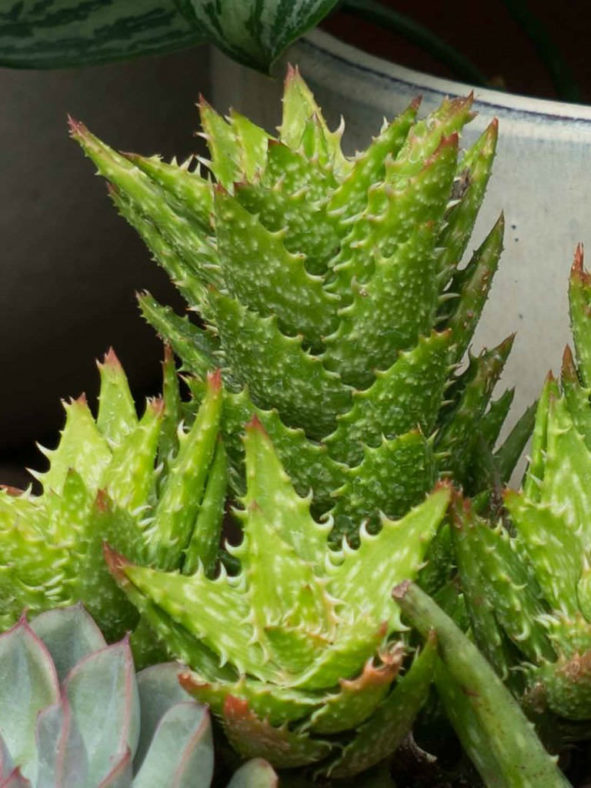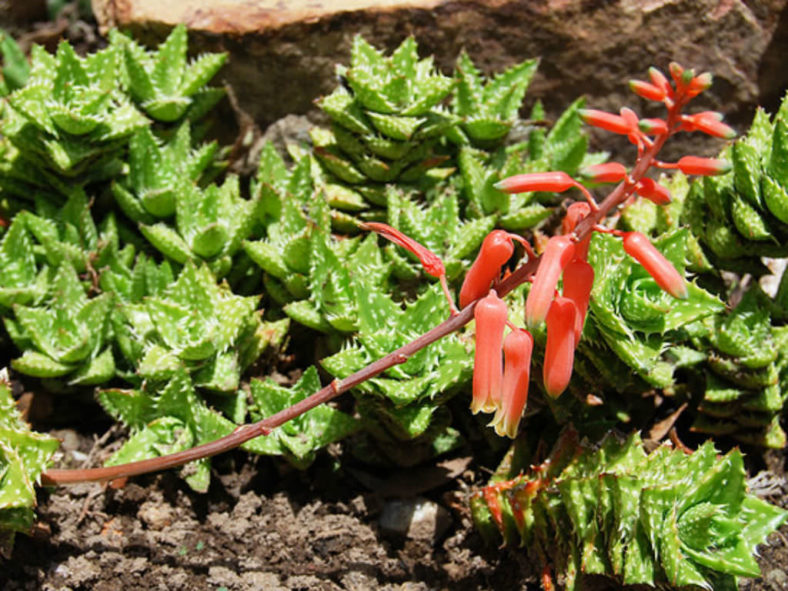Scientific Name
Aloe juvenna Brandham & S. Carter
Common Name(s)
Tiger Tooth Aloe
Scientific Classification
Family: Asphodelaceae
Subfamily: Asphodeloideae
Genus: Aloe
Etymology
The specific epithet "juvenna" (pronounced joo-VEN-nuh) is a pseudo-Latin word from the English "juvenile." In 1979, someone misread the original label of a plant tagged as "possible juvenile Aloe" and labeled it "juvenna." That label eventually became its official name.
Origin
Aloe juvenna is native to Kenya and restricted to a small area near the border with Tanzania.
Description
Aloe juvenna is a popular, branched succulent with thin, erect to arching stems and triangular, densely packed leaves, tipped with a small, tight rosette. It branches from the base and forms clumps of stems that can grow up to 2 feet (60 cm) long. The leaves are thick and fleshy, green with reddish to brown tones in full sun, and have prominent creamy-white spots. They have marginal teeth that merely look sharp, hence the common name "Tiger Tooth Aloe."
The flowers are red to orange-red with a yellow-green mouth and appear in summer on usually unbranched spikes that can grow up to 10 inches (25 cm) tall.

How to Grow and Care for Aloe juvenna
Light: When growing Aloes indoors, place your plants in a southern or southwest-facing window with plenty of bright, indirect light. When grown outdoors, provide light shade, especially during the hottest parts of the day.
Soil: Plant Aloes in well-drained soil specially formulated for cacti and other succulents, or make your own soil mix. Drainage is essential because too much moisture around roots can cause root rot.
Hardiness: Aloe juvenna can withstand temperatures as low as 20°F to 50°F (-6.7°C to 10°C), in USDA hardiness zones 9a to 11b.
Watering: These succulents require regular watering but are also very tolerant of drought conditions for short periods. Water deeply, but only when the top of the soil is dry. Reduce watering during the winter months.
Fertilizing: Aloes generally do not require fertilizer, but may benefit from the extra nutrients.
Repotting: These plants are not particularly fast-growing and will only rarely need repotting. Repot them in the spring in a container that is a few inches larger in diameter every few years to prevent them from becoming rootbound.
Propagation: Aloe can be propagated by offsets, cuttings, or seeds from a mature plant.
Learn more at How to Grow and Care for Aloe.
Toxicity of Aloe juvenna
Aloe juvenna is not considered toxic to people or pets.
Links
- Back to genus Aloe
- Succupedia: Browse succulents by Scientific Name, Common Name, Genus, Family, USDA Hardiness Zone, Origin, or cacti by Genus
Photo Gallery
Click on a photo to see a larger version.


